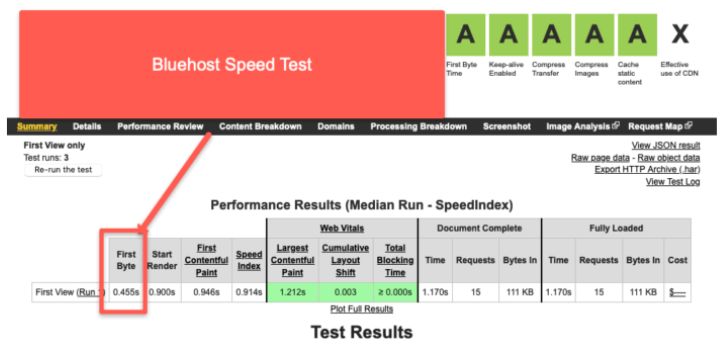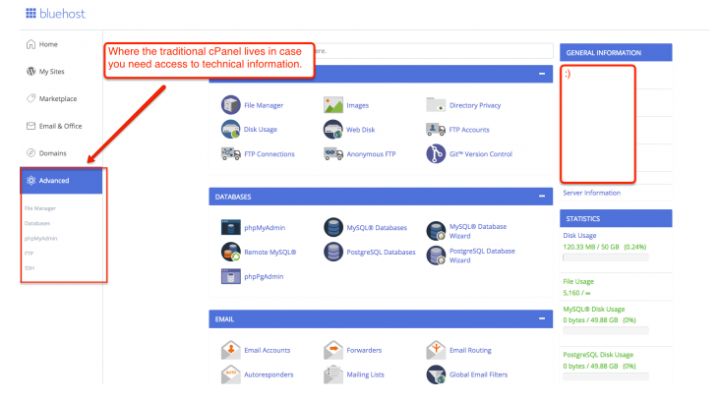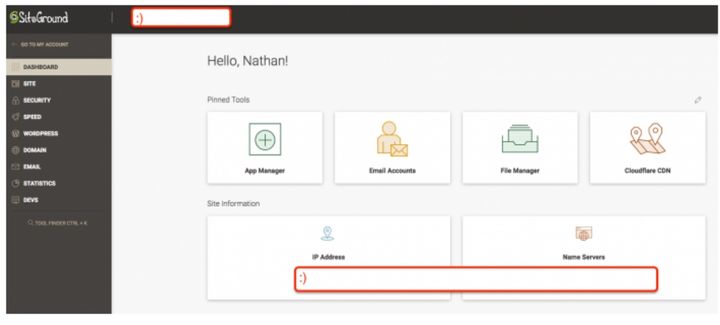If you’re shopping for a new web host, there’s a good chance Bluehost and SiteGround are on your shortlist, especially if you’re planning to run a WordPress website. I’ve written individual reviews of Bluehost and SiteGround, but here is a head-to-head comparison.
Bluehost and SiteGround are both:
- Established, well-known brands in the hosting industry, particularly in the WordPress hosting industry
- Provide a similar menu of products that revolve around shared Linux hosting
- Provide a full spectrum of hosting needs with advanced features
- Provide pricing & hosting products that focus on DIYers to small to midsize companies
- Are either endorsed by the WordPress Foundation or are ever-present at WordCamps
- Have marquee clients with plenty of endorsements or testimonials
And yet – they are very different companies with different brands and focuses.
Unlike most online reviews, I do not think there is such a thing as a “best” host. There is only the best fit for you based on your goals, expertise, resources, and preferences.
I have current clients who use (and love) Bluehost. Although this specific site runs on InMotion Hosting – I also have several projects that have run on SiteGround for years. I’ve been happy with them.
In this comparison between SiteGround and Bluehost, I’ll try to break down the differences that I’ve found in several areas ranging from pricing structure to customer service and market focus so that you can decide which is the best fit for your project.
Comparison Summary
| My Review | SiteGround Review | Bluehost Review |
|---|---|---|
| My Rating | 8.5/10 | 9.5/10 |
| Promotion | Save Up To 80% | Starting At $2.95/mo |
| Cheapest Plan | $2.99/mo. | $2.95/mo. | Uptime Guarantee |
| Money Guarantee | 30 days | 30 days |
| Free Domain | ||
| Free SSL | ||
| Free Website Migration | ||
| Learn More | Learn More |
Pricing
Bluehost and SiteGround offer a wide menu of hosting products, including Shared Hosting, VPS hosting, Reseller Hosting, Managed WordPress Hosting, dedicated hosting, domain registration, and more. But in this post – we’ll focus on their pricing for the most common web hosting service that small businesses usually need – a shared hosting plan.
Shared Linux hosting can accommodate a WordPress website, Joomla, and most non-Windows web apps. It’s usually bundled with email and other options. Shared hosting is versatile and makes sense for most business owners.
SiteGround Shared Hosting Plans
| Plan | StartUp | GrowBig | GoGeek |
|---|---|---|---|
| Initial Price* | $2.99/mo. | $4.99/mo. | $7.99/mo. |
| Renewal Price | $14.99/mo. | $24.99/mo. | $39.99/mo. |
| Websites | 1 | unlimited | unlimited |
| Storage | 10 GB | 20 GB | 40 GB |
| Bandwidth/month | unmetered | unmetered | unmetered |
| Free Domain Name | |||
| Free SSL | |||
| CDN | |||
| Dedicated IP | |||
| Daily Backups |
Bluehost Shared Hosting Plans
| Plan | Basic | Plus | Choice Plus | Pro |
|---|---|---|---|---|
| Initial Price* | $2.95/mo. | $5.45/mo. | $5.45/mo. | $13.95/mo. |
| Renewal Price | $10.99/mo. | $14.99/mo. | $19.99/mo. | $28.99/mo. |
| Websites | 1 | unlimited | unlimited | unlimited |
| Storage | 10 GB | 20 GB | 40 GB | 100 GB |
| Bandwidth/month | unmetered | unmetered | unmetered | unmetered |
| Free Domain Name | 1 year | 1 year | 1 year | 1 year |
| Free SSL | ||||
| CDN | ||||
| Dedicated IP | ||||
| Daily Backups |
SiteGround and Bluehost offer tiered pricing. SiteGround has three tiers, and Bluehost has four. With both, the bottom tier is geared for starter websites, the middle toward growing sites, and the top tier is suitable for high-traffic sites that require more resources or features.
Unfortunately, SiteGround’s and Bluehost’s tiers do not match up well, so comparing apples to apples is hard. Both use different caps and bonuses at each level.
Bottom-Tier Pricing Comparison
The lowest-price service plans are best suited for small websites on a budget.
- SiteGround’s StartUp plan renews at $14.99/mo.
- Bluehost has the Basic plan & renews at $10.99/mo.
SiteGround uses a domain name and storage cap. This means that you can only have one website on the StartUp plan and can only store up to 10GB. But your emails and databases are unlimited.
Bluehost has a domain name, website space, and email account caps. This means that you can connect to a single website, but you are also limited on your file storage and email accounts that you can set up.
If you plan to set up more than six development / sub-websites with minimal storage usage, then SiteGround has better promotional pricing on their bottom-tier plan.
If you are looking for the most overall versatility and value, then Bluehost has better bottom-tier pricing.
Mid-Tier Pricing Comparison
The middle tiers are the most comparable between both companies, but they still differ.
- SiteGround has the GrowBig plan & renews at $24.99/mo.
- Bluehost has the Plus plan & renews at $14.99/mo.
SiteGround caps storage at 20GB but adds unlimited websites. They also add bonus/premium features like free wildcard SSL and “premium support.”
Bluehost limits storage to 20GB, but they remove caps from databases and email accounts. They also offer unlimited websites on the Plus plan.
If you want to set up multiple sites, Bluehost’s Plus plan is the better overall.
Top-Tier Pricing Comparison
At the pricing tier, neither company puts caps on their core hosting features (except for SiteGround’s 30GB storage cap). Instead, the comparison comes down to “bonus” or “premium features.”
I’ll cover the different hosting features in the next section, but it’s important to think about what your goals & needs are. There is no sense in paying for features that you will never use.
It’s also useful to note the features that aren’t indeed “premium.” In other words, a company can offer “increased speed” as a premium feature. But is the “increased speed” because the other plans are slow or because there is a substantial change in the account? In short – always ask why before buying the benefit.
- SiteGround has the GoGeek plan and renews at $39.99/mo.
- Bluehost has the Choice Plus plan & renews at $19.99/mo.
Bluehost bonus features include “SpamExpert,” “Domain Privacy,” and “CodeGuard Backup.” The only true bonus is CodeGuard PRO – which will back up and restore your site for free. The contrast here is those site backups are also included in SiteGround’s plans, so it’s not a super-compelling pitch…unless you need to restore specific parts of your site.
Domain privacy sounds great, but it’s only valued at around $24/yr – so it’s not worth the added cost.
SiteGround’s second and third tiers add several layers of worthwhile premium features, but they are significantly more expensive than the comparable Bluehost plans. They do not include unlimited storage at any tier, even though they allow unlimited websites.
SiteGround’s third tier is worth the money if you want the convenience of pre-built staging, Git Repo Creation, and wildcard SSLs.
That said – there is much more to a web hosting company than price. Let’s look at some other key features.
Hosting Features
As I’ve outlined in my best web hosting reviews, it’s useful to break web hosting features into two groups – “core features” and a “bonus/premium features.”
I mentioned this in the previous section, but want to expand on it here to help you discern which features you need.
Core features are what I call the “3 D’s” – domains, disk space, databases, and email.
Domains refer to the number of websites you can connect to your hosting account. Disk space is how many files you can store on your account, and databases/email is how much software you can install to help manage those files (e.g., one install of WordPress requires one database on your server).
As mentioned in the pricing, both web hosts mix and match these core hosting features based on the pricing tier.
They also all maintain new, current hardware. Bluehost uses industry-standard software such as cPanel and MySQL that “run” your core features, allowing for flexible and familiar management. There’s nothing proprietary about their setup – so you can pick up and leave whenever you want.
Both have PHP 7 available, but SiteGround uses a proprietary backend, allowing for more customization and a better fit for some websites. Both web hosts offer unmetered bandwidth, FTP accounts, and automatic WordPress installation.
SiteGround offers free migration from other hosts, while Bluehost charges for the service. This indicates that Bluehost is focused on acquiring new customers rather than acquiring customers with existing websites.
Both include a free SSL certificate from LetsEncrypt in their plans.
SiteGround has data centers worldwide, including Singapore, while Bluehost has data centers in Provo, Utah. This is a solid advantage for ex-US customers with SiteGround.
Bluehost includes a free domain for new customers – which can be convenient for anyone that doesn’t have a domain name from a 3rd party already.
SiteGround focuses on developer-friendly premium features such as Git rep creation and built-in staging.
SiteGround will be more appealing to developers or freelancers looking for specific features – or convenient access to free features like Cloudflare CDN or LetsEncrypt.
Speed & Performance
The core job of a web hosting platform goes beyond simply storing and delivering files to your website visitors. You’ll also want your web host to deliver the files quickly and consistently.
Server Speed
Many factors contribute to website speed. If your site is running slowly, it’s not necessarily your web host’s fault.
That said, server speed is still critical, but comparing speed between web hosts can be difficult.
I like to test the Time To First Byte (TTFB) – a measurement for how quickly a server sends back the first byte of data after it receives a request from a browser.
Here are the results from my most recent tests with SiteGround and Bluehost, starting with the results for the former:

And Bluehost’s test results:

As you can see, both results were nearly identical in the test I performed.
Remember, this is only one test, although the results align with my findings over the years. Generally, SiteGround is among the fastest web hosts that I test. Bluehost has historically been slower, but they have improved as of late. They are usually tit for tat and within a very tight margin. You can use and optimize either one and get a very fast site.
They are all within a good speed margin. None are “slow,” per se. If you implement basic speed improvements, you can beat any competitor on a “fast” host who does not implement basic speed improvements.
Now – raw speed is not the only performance variable to look at. You also have to look at uptime/downtime.
Uptime
Both hosts guarantee their uptime and will credit you free months if you have downtime. But uptime/downtime is a tough topic to discuss.
Why? Because every website will go down. Even YouTube has gone down. Facebook and Amazon too. Every website host will go down at some point.
The trick is to figure out if downtime is more or less likely due to culture, technology, or raw size.
SiteGround focuses on radical transparency. They have an uptime monitor on their homepage. They are open and upfront about it. Their primary risk is that they are growing so fast that internal errors can happen – either on the human or hardware side.
Bluehost is a bit different. They are owned by the largest web hosting provider in the world (Newfold Digital). They have the resources and capital to fix infrastructure and provide quick solutions. However, they also represent an enormous target for hackers. Also – because of their scale, when things go wrong…they really go wrong.
In 2016, they had a “spanning tree protocol” issue due to a potential DDoS attack that led to 12+ hours of downtime for millions of accounts. They were open and transparent throughout the incident on Twitter and email…but it was an illustration of what happens at that size.
All that to say – I give SiteGround extra points for uptime – not because they haven’t had downtime, but because I believe they are less at risk of massive downtime.
Usability & Onboarding
Any good product can turn bad quickly if you’re not using it properly. This is very true with web hosts.
SiteGround and Bluehost both perform well when it comes to onboarding and ease of use.
They both make installing common web apps like WordPress a breeze. Here’s what their respective “backend” setups look like:
Both backends are pretty straightforward. Bluehost has a nice custom design scheme with access to cPanel in “advanced tools.” They have a direct WordPress integration with cPanel. SiteGround goes full custom without the traditional cPanel. That has some good & bad depending on your preference.
Both have solid onboarding during signup. SiteGround has a versatile signup process. It is straightforward but also focused more on existing site owners.
Bluehost’s onboarding is focused on first-time users with a narrow but well-designed process.
If you are a first-time user, you’ll likely feel more comfortable with Bluehost. If you have signed up for hosting before, you’d be fine with either one.
Customer Service
I’ve mentioned in past Bluehost articles that the company views customer service as an investment. Take care of the customer and it will pay off in the long run.
Bluehost offers phone and chat support, and you can access their significant DIY knowledge base on their website. But everything is set up to triage your question. That’s okay, but it’s also the typical customer service you expect from a big company.
SiteGround, on the other hand, places customer service front and center in their positioning.
SiteGround provides excellent support. They have a wide range of access with incredibly fast response times. You will also likely talk immediately to a specialist rather than a support triage person.
You’ll likely be comfortable with Bluehost if all you need is basic support. For more advanced troubleshooting, SiteGround is a much better option.
Market Focus
While every host says they are for “everyone,” – the open secret is that no single brand can serve everyone’s needs.
When looking for the hosting option that’s best suited *for you*, it’s important to understand exactly who their core market is so that you can work with a company that will focus on your needs over the coming years.
Audience Type
Here’s how I categorize Bluehost and SiteGround:
SiteGround – They are focused on the technical side of running a website. In other words, raw performance, features, and support all matter – because that constitutes a high-quality website. They sweat the technical details and focus their marketing materials on appealing to website owners proud of running a good online operation.
Bluehost – They are focused on the usability side of running a website. In other words, pricing, performance, and features matter – but only because they help website owners get started and keep going. They invest in good pricing, approachable design, and features that appeal to anyone who feels daunted by setting up a website. They want a self-hosted WordPress site to be easily accessible.
Geography
The Internet may be global, but your audience is often not. If your audience (not your business) is located primarily in a single region, it makes sense for your website to “live” there…if there is a reputable host nearby.
Bluehost’s data center is located in Utah, USA. SiteGround has data centers in Chicago, Singapore, and Europe.
If your audience is primarily in Europe or Asia, you should consider SiteGround.
If your audience is global, either will do well, especially if you add a “content delivery network” (CDN) to your website.
FAQs
Bluehost vs. SiteGround Conclusion
So Bluehost or SiteGround? They’re both fine hosts with some differences.
If you prioritize name-brand and a clean, beginner-focused experience – then I’d go with Bluehost. If you prioritize raw performance, new features, and global data centers – choose SiteGround.
If you’re still undecided, check out my Website Setup Guide or my best web hosting article.





